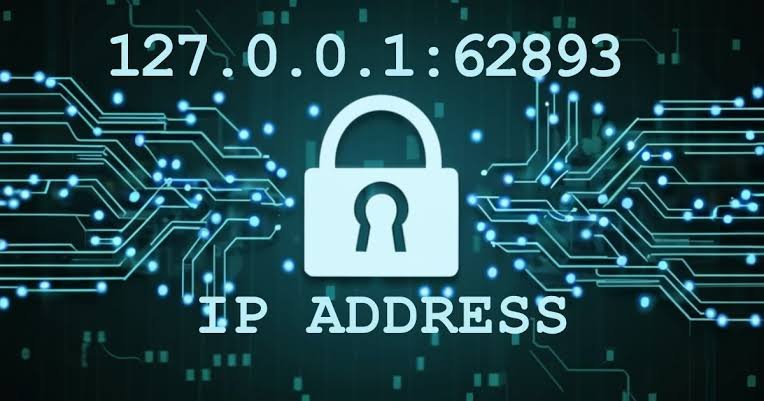Understanding the Basics: What is 127.0.0.1:62893?

In the world of networking and web development, you may have come across addresses like 127.0.0.1:62893 and wondered what they mean. This combination of numbers is an example of an IP address paired with a port number, two key elements that allow computers to communicate over a network. Let’s break it down to better understand the significance of 127.0.0.1 and 62893.
- 1 What is 127.0.0.1?
- 2 What is a Port Number?
- 3 What Does 127.0.0.1:62893 Mean?
- 4 Common Uses of 127.0.0.1 and Ports
- 5 Conclusion
- 6 FAQs About 127.0.0.1:62893
- 6.1 1. What does 127.0.0.1:62893 mean?
- 6.2 2. Why use 127.0.0.1 instead of another IP address?
- 6.3 3. What is a port number in 127.0.0.1:62893?
- 6.4 4. Why is 62893 chosen as the port number?
- 6.5 5. How do I access 127.0.0.1:62893?
- 6.6 6. What happens if I can’t connect to 127.0.0.1:62893?
- 6.7 7. Is 127.0.0.1:62893 secure?
- 6.8 8. What types of applications use 127.0.0.1:62893?
- 6.9 9. Can I change the port number from 62893 to another?
- 6.10 10. How do I find out which application is using port 62893?
- 6.11 11. Why would a service use a high port like 62893?
- 6.12 12. Can I access 127.0.0.1:62893 from another computer?
- 6.13 13. What is the difference between 127.0.0.1:62893 and localhost:62893?
- 6.14 14. Can multiple services use the same port number on 127.0.0.1?
- 6.15 15. Is it possible to access 127.0.0.1:62893 over the internet?
What is 127.0.0.1?
127.0.0.1 is a loopback IP address, commonly known as “localhost.” In simple terms, it represents your own computer or device in the context of networking. When you refer to 127.0.0.1, you’re telling your machine to connect to itself. This loopback address allows you to test network services or applications without needing an external connection to another machine.
Some key points about 127.0.0.1:
- Reserved IP: It is a special IP address reserved for loopback testing, meaning you cannot use it to communicate with other devices on a network.
- Local Environment Testing: Developers use 127.0.0.1 to run and test web servers, databases, and other services on their local machine before deploying them to live environments.
- Speed and Convenience: Since the traffic is routed internally within the device, it’s extremely fast and does not require network hardware like a router.
What is a Port Number?
A port is essentially a virtual doorway through which data can be exchanged between your device and the internet or a network. Each port is associated with a specific process or service running on the machine. The combination of an IP address and a port number directs the data to the correct destination.
In the example 127.0.0.1:62893, 62893 is the port number. It’s the entry point through which data is sent or received by a specific application on your machine.
- Range of Port Numbers: Port numbers range from 0 to 65535. Well-known ports (0-1023) are usually reserved for system-level services, while ports above 1023 are used by user-level applications.
- Dynamic Ports: 62893 falls within the range of dynamic or private ports (49152–65535). These are typically assigned temporarily by the operating system to applications that need a network connection for a short period. They’re often called ephemeral ports.
What Does 127.0.0.1:62893 Mean?
When you see 127.0.0.1:62893, you’re looking at an instruction telling your machine to connect to a service running on your local computer through port 62893. Here’s how it works in practice:
- 127.0.0.1 specifies that the connection will occur locally, without any need for an external network.
- 62893 points to a specific service or application on your computer listening for traffic on that port.
For example, if you’re running a web server or a local development server, the application might bind to this specific port to accept incoming traffic. Accessing 127.0.0.1:62893 in your web browser or through a command-line tool like curl would direct your request to that application on your local system.
Common Uses of 127.0.0.1 and Ports
- Local Development: When developing websites or applications, developers often run web servers (like Apache, Nginx, or a Node.js server) on localhost. The server might be set to listen on a dynamic port (like 62893), which allows the developer to access and test the application locally before deployment.
- Troubleshooting and Testing: Since 127.0.0.1 is your own computer, it’s useful for testing network-related tools like database connections or APIs without risking changes to the live environment. For example, a MySQL database running locally might be accessible via 127.0.0.1:3306 (3306 being the default MySQL port).
- Docker and Virtualization: Technologies like Docker often use 127.0.0.1 in combination with custom port numbers to allow containers (isolated environments) to communicate with the host machine. Each container might expose a different port to handle traffic locally.
- Firewall and Security: Since 127.0.0.1 is only accessible locally, it’s often a secure environment for internal services. However, if the machine is compromised, any services listening on ports (like 62893) could be vulnerable if not properly secured.
Conclusion
The address 127.0.0.1:62893 represents a local network connection where 127.0.0.1 directs traffic to your own device and 62893 points to a specific service or application running on that device. Understanding this concept is fundamental for anyone involved in web development, networking, or systems administration. It’s a powerful tool for local testing, development, and troubleshooting, allowing you to simulate network environments without the need for external connections.
FAQs About 127.0.0.1:62893
1. What does 127.0.0.1:62893 mean?
127.0.0.1 is a loopback IP address (also known as localhost) that refers to your own device. 62893 is a specific port number assigned to an application or service on your local machine. Together, 127.0.0.1:62893 means your computer is accessing a service hosted on itself through port 62893.
2. Why use 127.0.0.1 instead of another IP address?
127.0.0.1 is used to test or run services locally on your own computer without using an external network. It is a special IP reserved for loopback, allowing developers and network administrators to simulate network connections internally.
3. What is a port number in 127.0.0.1:62893?
A port number is a communication endpoint. In this case, 62893 identifies a specific service or process running on your computer. Different services use different ports, allowing multiple applications to run on the same machine simultaneously.
Also Read: How Fashionisk.com Redefines Modern Fashion
4. Why is 62893 chosen as the port number?
62893 falls within the range of dynamic ports (49152–65535), also called ephemeral ports. These ports are often assigned temporarily by the operating system to applications for short-term communication needs. The specific number, 62893, could have been randomly assigned or manually configured by a developer.
5. How do I access 127.0.0.1:62893?
You can access it by typing http://127.0.0.1:62893 or https://127.0.0.1:62893 in your web browser if the service running on that port is a web server. Alternatively, you can use command-line tools like curl or telnet to test the connection.
6. What happens if I can’t connect to 127.0.0.1:62893?
If you can’t connect to 127.0.0.1:62893, it could be due to several reasons:
- The service listening on port 62893 might not be running.
- A firewall or security setting could be blocking the port.
- The application may have been configured to use a different port.
Check if the service is running and that no other application is using the same port.
7. Is 127.0.0.1:62893 secure?
Since 127.0.0.1 is a loopback address that only your computer can access, it is generally secure from external threats. However, if your system is compromised, any service running on 62893 or any other port could potentially be exploited. Always ensure that services are properly secured, even locally.
8. What types of applications use 127.0.0.1:62893?
Many types of applications use local IP addresses and ports for communication, including:
- Web servers (e.g., Apache, Nginx, or Node.js servers).
- Databases (e.g., MySQL or PostgreSQL running locally).
- Development tools (e.g., Docker containers or virtual machines).
- API services being tested locally by developers.
9. Can I change the port number from 62893 to another?
Yes, you can change the port number. Most applications allow you to configure the port they listen to in their settings or configuration files. Ensure that the new port you choose is not already being used by another application.
10. How do I find out which application is using port 62893?
On most systems, you can use a command-line tool to check which application is using a specific port. For example:
- On Windows, use
netstat -a -b. - On Linux/Mac, use
lsof -i :62893ornetstat -an | grep 62893.
These commands will show the processes and applications tied to that port.
11. Why would a service use a high port like 62893?
High ports (above 1023) are often used for temporary or dynamic connections. Services or applications that don’t require well-known ports will use these dynamic ports to avoid conflicts with system-level services (which use ports 0-1023).
12. Can I access 127.0.0.1:62893 from another computer?
No, 127.0.0.1 is a loopback address, meaning it only works locally on your own computer. To access the service from another machine, you would need to use the actual IP address of the computer (e.g., 192.168.1.100) instead of 127.0.0.1 and ensure that the port is open to external traffic.
13. What is the difference between 127.0.0.1:62893 and localhost:62893?
Both 127.0.0.1 and localhost refer to the same thing—your own computer—but localhost is the hostname (a human-readable address), while 127.0.0.1 is the corresponding IP address. In most systems, they are interchangeable.
14. Can multiple services use the same port number on 127.0.0.1?
No, only one service can bind to a specific port number at a time. If multiple services attempt to use the same port (e.g., 62893), you’ll get a conflict, and one of the services will fail to start.
15. Is it possible to access 127.0.0.1:62893 over the internet?
No, 127.0.0.1 is strictly for local use. To expose a service to the internet, you would need to configure your network to use your machine’s public IP address or domain name, not 127.0.0.1.




